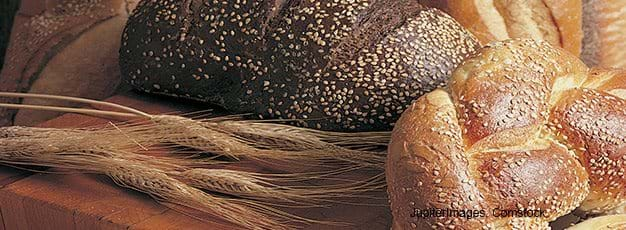Consumer Preferences Change Wheat Flour Use

After 5 years of declining flour use in the U.S., ERS estimates an increase in per capita wheat flour use to 137.9 pounds in 2007, up 2.3 pounds from a year earlier. The 2007 total is still down 8.9 pounds from its high in 1997. ERS calculates per capita use by dividing the total annual availability by the U.S. population in the same year. These per capita availability estimates provide an indication of trends in Americans’ consumption of various foods over time.
Between 1972 and 1997, U.S. wheat producers and millers could count on rising per capita food use of wheat flour to expand their domestic market. Contributing to this growth was the boom in away-from-home eating, the desire of consumers for greater variety and more convenient food products, promotion of wheat flour and pasta products by industry organizations, and wider recognition of health benefits stemming from eating high-fiber, grain-based foods.
The decades-long growth ended in 1997, as changing consumer preferences, led by the increased adoption of low-carbohydrate diets after 2000, reduced per capita wheat consumption. Per capita flour use dropped rapidly at first and then fell more slowly until reaching a low of 134.2 pounds in 2005. In response, the flour milling industry began to downsize, leading to the closure of some smaller, older, and less efficient mills. From 2000 to early 2006, 12 percent of the 223 mills listed in the industry publication Grain and Milling Annual closed, and milling capacity fell by 7 percent.
The baking industry responded by developing products to satisfy these new dietary preferences, particularly the increased demand for higher fiber and protein. According to Datamonitor, 558 wheat-flour products were introduced in 2007—more than a fourfold increase from the 97 new wheat-flour products that hit the shelves in 1997. Eighty-six whole-wheat flour products were introduced in 2007, up from 16 in 1997. These new product introductions appear to be succeeding because per capita use bottomed out and then rose sharply in 2007.
Despite the recent increase in per capita consumption and new recommendation in the 2005 Dietary Guidelines for Americans that whole grains should account for half of all grains consumed, Americans still favor refined-wheat flour products over whole-wheat flour products. According to Milling & Baking News, whole-wheat flour grew from 2.1 percent of total flour production in 2002-03 to 4.1 percent in 2006-07.
Food Availability (Per Capita) Data System, by Linda Kantor and Andrzej Blazejczyk , USDA, Economic Research Service, September 2024
Wheat, by Andrew Sowell , Bryn Swearingen, and Todd Hubbs, USDA, Economic Research Service, August 2024
Wheat Data, by Andrew Sowell , USDA, Economic Research Service, November 2024


